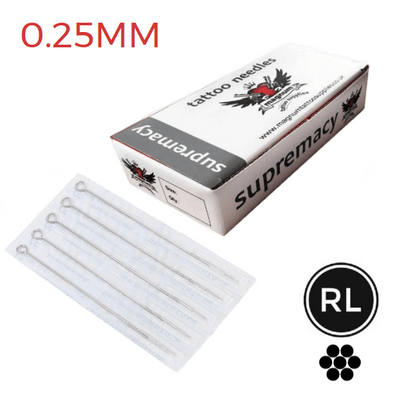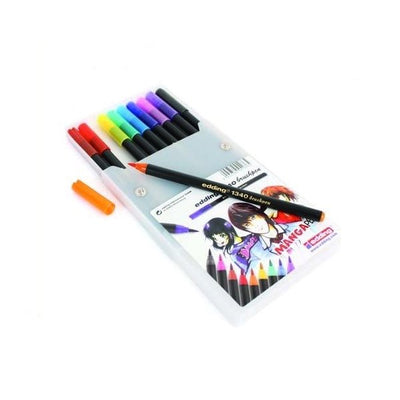Your new tattoo is a masterpiece, a symbol of your uniqueness and creativity. But what happens after you leave the tattoo studio? The excitement of fresh ink can quickly turn into worry about proper tattoo aftercare. You're not alone if you're wondering how to prevent fading, maintain vibrant colours, and ensure your tattoo heals flawlessly.
In our guide to new tattoo aftercare, we unravel the secrets of preserving your ink's brilliance. You will now have confidence as we reveal the essential steps for keeping your tattoo looking as amazing as the day you got it.
Why is proper tattoo aftercare important?
Tattoo aftercare is essential because it directly impacts the healing process, appearance, and longevity of your new ink. Without proper care, tattoos can be susceptible to infections, scarring, and colour fading. Following aftercare instructions provided by your tattoo artists helps prevent these risks by promoting optimal healing, minimising discomfort, and maintaining the vibrancy of the tattoo. It's not just about preserving the artistry; it's about safeguarding your skin's health.
Day-by-day aftercare guide
Day 1:
On the very first day, your tattoo is essentially an open wound, making it susceptible to infections. After getting your tattoo, you'll typically leave the tattoo shop with a dressing over the inked area. Depending on what your artist uses, it could be gauze, plastic wrap or a “second skin” type of adhesive. You need to keep your tattoo covered to protect it from environmental contaminants.
During this day, you may notice fluids like blood, plasma, and a little extra ink oozing from the area. As the day progresses, the tattooed area may appear red, feel sore, and even be slightly warm. It's essential to resist any urges to touch it frequently.
Days 2–3:
In these following days, the vibrancy of your tattoo might seem to decrease, taking on a duller appearance. This dullness is a part of the skin's healing process. You might start seeing the formation of scabs. When cleansing, which you should do once or twice daily, you may notice some ink runoff. This runoff is simply excess ink rising through the skin. After each wash, it's crucial to keep the area moisturised using the ointment or lotion recommended by your tattoo artist.
For a tried-and-true solution, consider the Tattoo Goo Aftercare Lotion. Not only does it offer essential hydration, but it's also designed to enhance the healing of your tattoo, ensuring it looks its best
Days 4-6:
If your artist applied the “second skin” type of adhesive, this period is usually when you'd remove it. Some artists suggest easing the removal process by running water over the area. With sanitised hands, gently peel back the adhesive. Post removal, any persistent redness from the initial days should start to fade. Light scabbing might still be visible. As before, avoid picking at these scabs to prevent scarring and potential loss of ink. Continue with the regimen of washing the tattoo gently and then moisturising.
Days 6–14:
By now, the initial scabs will have hardened and may begin to flake off naturally. It's essential to let this process happen without any interference. During this period, itchiness is a common experience. To alleviate this, use a fragrance-free, alcohol-free moisturiser. If, however, you notice prolonged redness and swelling, it could be a sign of infection. It's crucial at this juncture to consult a healthcare professional or revisit your tattoo artist for advice.
For those looking for a premium moisturising experience tailored specifically for tattoos, the MTS Tattoo Balm is a top pick. This specialised product ensures that your ink remains vibrant and well-hydrated while relieving any itchiness.
Days 15–30:
Entering this phase, you'll observe that most of the large flakes and scabs have vanished. While some dead skin might linger, it should clear up as the days' progress. Even though the tattooed area's outer layers would have healed by this time, the deeper skin layers can take a few more months to completely heal. During this time, continue moisturising the area to combat any dryness.
Proven tips for long-term tattoo aftercare
Wear loose clothes to avoid rubbing against your tattoo
Tight clothing can cause excess friction against tattooed skin, which can be harmful, especially during the early stages of healing. Loose clothing ensures minimal contact, reducing the risk of irritation.
Apply a thin layer of moisturiser regularly to keep your tattoo hydrated
Moisturising prevents the skin from becoming dry, aiding the healing process. A hydrated tattoo will maintain its colours and clarity over time.
Drink plenty of water to maintain hydration during healing
Drinking plenty of water benefits the skin's overall health. Well-hydrated skin can recover faster, ensuring a smoother healing process for the tattoo.
Carefully cleanse your tattoo using warm water and a gentle soap
This helps keep the tattooed area clean and free from potential contaminants. You should gently wash the tattoo to prevent any agitation in the area and aids in healing. To elevate your tattoo cleaning routine, consider using Tattoo Goo Antimicrobial Aftercare Soap. It is specially formulated for tattooed skin and also offers additional protection against harmful microbes.
Don't let your tattoo get too much sun - protect it
Excessive sun exposure or direct sunlight can fade the ink, making your tattoo look dull over time. Always apply sunscreen or cover the tattooed area when heading out into the sun.
Take it easy and avoid intense activities or workouts
Heavy workouts or activities can cause excessive sweating and stretching of the skin, which might hinder the healing process of a fresh tattoo.
Let tattoo scabs heal on their own - don't pick at them
Scabs are part of the natural healing process. Picking at them can lead to scars and can even pull out the ink, making the tattoo patchy.
Skip swimming for a while, but remember to take showers
Swimming pools, lakes, or any water bodies might harbour bacteria that can lead to infections. However, taking regular showers is encouraged to keep the tattoo clean.
Give up alcohol for a few days to help healing
Alcohol can thin the blood, which might interfere with the tattoo healing process. It's advisable to reduce or eliminate alcohol intake for a few days post-getting a tattoo.
Avoid shaving over your new tattooed area
Shaving can cause irritation and might accidentally remove scabs, hindering the healing process. It's best to wait until the tattoo has fully healed before resuming shaving in that area.
Signs to see your doctor
While most tattoos heal without any problems, there are situations where you might need to seek medical attention. Here's when it's time to reach out to your doctor:
- Pus or Discharge: Any oozing, especially if it's green or yellow (pus), from the tattooed area is a significant red flag.
- Chills and Sweats: Feeling cold, followed by bouts of sweating, could be related to an underlying issue connected to your tattoo.
- Increased Pain: Pain is a common sensation after getting inked. But, if it intensifies without any relief, it could indicate an infection.
- Fever: A fever could be a sign that your body is fighting off an infection, which might be related to your tattoo.
- Swelling: Some swelling is typical after getting a tattoo. However, if it worsens over time or if applying ice doesn't help reduce it, it's time to consult with a healthcare professional.
- Rash or Hot Raised Skin: If you notice a rash or hot, raised skin around the tattoo area, it could be a sign of an allergic reaction or infection.
Conclusion
New tattoos are more than just fresh ink on the skin; they're a testament to personal expression, moments of significance, and artistic appreciation. Ensuring their longevity and vibrancy is paramount. Proper aftercare is the cornerstone of preserving the brilliance and detail of your newly healed tattoos.
By diligently following recommended care steps, not only do you protect your skin and health, but you also honour the artistry and personal investment that went into your new piece. Remember, a tattoo's initial appearance is only as good as the care it receives; with meticulous attention and patience, your tattoo will remain a vibrant testament to its original allure for years to come.



























































 Studio supplies
Studio supplies












 Power & batteries
Power & batteries








 Aftercare
Aftercare





















 Apprentice
Apprentice


 Piercing & jewellery
Piercing & jewellery







 PMU supplies
PMU supplies




 New arrivals
New arrivals
 Gift vouchers
Gift vouchers
 Shop all
Shop all


















































